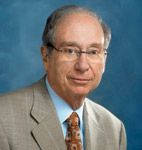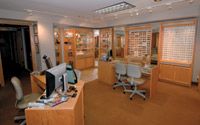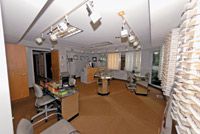Article
Revive sluggish sales by shaking up your dispensary
An optical dispensary can be a highly profitable business. However, operating a successful dispensary takes preparation in diverse disciplines-such as design, marketing, inventory management, and types of lens treatments-while maintaining a sharp focus on the latest styles and trends in eyewear.

Approximately 1 year ago, I began what would become an odyssey, a quest that transformed me from an ophthalmologist with the usual professional concerns to one with a sharp focus on my optical shop.
Two other ophthalmologists and I make up Eye Associates of Wayne, Wayne, NJ. Together, we own-and I manage-the optical dispensary shop, Eye Associates Opticians. With our newly revamped dispensary now open for business, I want to share insights about the process I used to revitalize a valuable part of our business.

At that time we had three opticians on staff. All three had wonderful customer service skills; the quality of their materials and finishing was excellent. Our inventory, however, was repetitive. The display furniture and lighting were outdated. Even our office staff was hesitant to shop for glasses there.
My research on the optical industry told me that a dispensary can be a highly profitable business. However, in order to turn around Eye Associates Opticians, I had to learn more.
Field study

The VEW exhibition hall also was a tremendous resource. Industry veterans and manufacturers were generous with their time and expertise because they know that if ECPs understand their products, we can sell more for them. I also interviewed distributors of devices that enable patients to preview how they would look in a certain eyeglass style (Smart Mirror, A.B.S. Inc., and similar devices). Today, I would not be without one in my dispensary.
During VEW, I discovered that there are several reasons why your dispensary should stock high-end frames. During a session on marketing, I learned the principle of good, better, best-the customer (or patient, in our case) will most often choose the middle option. Consequently, if you introduce high-end frames into your inventory, your previous high-end frames become the middle. Therefore, the often-chosen middle is now a better-and higher-priced-frame.
High-end frames also serve to define the optical shop as high-quality. In our locale, higher-priced merchandise and sensitivity to European designs keep our more affluent patients shopping here instead of going to New York City. Those frames are not for everyone and we will not sell them aggressively. By showing high-end frames prominently, however, we reassure patients about the quality of our products and services.
As general ophthalmologists, we must continually learn about the best medications and procedures available. But how much do we know about the various optical lenses on the market? If we aim to help patients have the best vision available to them, we must be able to explain lens options.
We now suggest lens options such as multifocals and polarized lenses, and are specific in what we recommend. Whenever possible, we use demonstration aids provided by the manufacturer.
Newsletter
Don’t miss out—get Ophthalmology Times updates on the latest clinical advancements and expert interviews, straight to your inbox.




